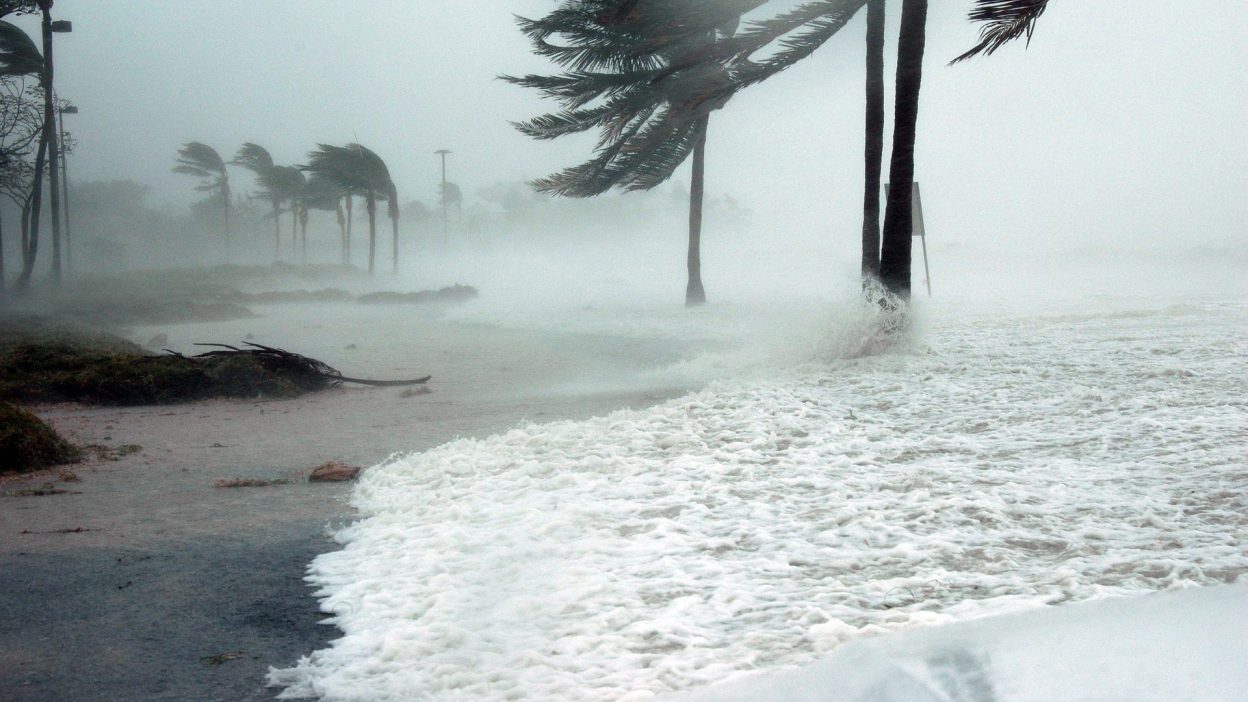The Forgotten Storm That Shattered Central America – Are We Still At Risk?
Hurricane Mitch, which struck in 1998, is recognised as one of the most deadly hurricanes in history. It devastated large parts of Central America, especially Honduras, Nicaragua, and Guatemala. With wind speeds reaching up to 180 mph, the storm tragically claimed more than 11,000 lives, left thousands injured, and displaced many more. The storm’s damage was catastrophic, destroying entire towns, causing massive flooding, and triggering landslides. To this day, the consequences of Mitch continue to influence the region, with recovery efforts still ongoing in some areas.
In its wake, Mitch caused an estimated $6 billion worth of damage, leaving people homeless and destroying crucial infrastructure, including roads, bridges, and healthcare facilities. Despite extensive international aid, the road to recovery has been long and slow. For many affected regions, it took years to rebuild, and the social and economic impacts of the storm were felt long after the immediate destruction had passed.
Nature’s Wrath: The Ferocity of Hurricane Mitch
Hurricane Mitch was not just another storm; it was a natural disaster of extreme proportions. The hurricane escalated rapidly, reaching Category 5 status, and caused unimaginable destruction with its unrelenting rainfall and intense winds. What made Mitch even more catastrophic was its slow movement, especially over Honduras and Nicaragua, where it hovered for days, flooding vast areas and leaving towns completely submerged.
The force of the storm highlighted the raw power of nature, demonstrating how quickly conditions can change when a hurricane intensifies. While it was the storm’s winds that caused initial devastation, it was the continuous rainfall—up to 75 inches in some locations—that led to the most severe flooding. Entire villages were swallowed by floodwaters, and the consequences for the local population were dire. The overwhelming scale of the destruction left emergency response systems struggling to cope, further complicating relief efforts.
The Human Cost of Hurricane Mitch: A Devastating Loss of Life
- Fatalities and Injuries: Mitch claimed the lives of more than 11,000 people, while over 10,000 others suffered injuries. The majority of deaths occurred due to landslides and flash floods that buried villages under debris. The ferocity of the storm and its torrential rains overwhelmed communities, resulting in a staggering loss of life.
- Displacement and Health Crisis: The aftermath saw millions displaced, with over a million people left without homes. In the chaotic environment following the storm, there was a severe lack of healthcare, which led to outbreaks of diseases like cholera and malaria. Temporary shelters became overcrowded, worsening the spread of illness.
- Economic Destruction: The financial toll of the hurricane was immense, with damages reaching approximately $6 billion. Agriculture, particularly crops like bananas and coffee, was severely impacted. The destruction of vital infrastructure, such as roads and bridges, further hampered relief efforts, making it difficult to transport aid or restore critical services. The economic recovery was slow, and many individuals and families struggled to rebuild their lives in the years that followed.
Could Hurricane Mitch Have Been Averted? A Deep Dive into Missed Opportunities
The question remains: could the catastrophic effects of Hurricane Mitch have been prevented? While the storm itself could not have been stopped, there were numerous missed opportunities in terms of preparedness and response. Effective early warning systems and better infrastructure could have saved many lives. Although such storms are unpredictable, the lack of proper disaster management contributed significantly to the widespread damage.
In regions like Honduras and Nicaragua, even with warnings, the destruction was unavoidable due to poor infrastructure and a lack of evacuation plans. Flash floods overwhelmed cities, and many areas had no drainage systems to handle such extreme weather conditions. In hindsight, more immediate international support and disaster response protocols might have alleviated some of the storm’s consequences, but at the time, these measures were insufficient.
Political Aftermath: Did Mitch Reveal Weaknesses in Disaster Management?
The political fallout from Hurricane Mitch was far-reaching. Governments in the affected countries faced significant criticism for their inability to handle the crisis effectively. The lack of preparedness, slow response times, and inadequate relief efforts highlighted the systemic weaknesses in disaster management at the time. Many people felt that governments were ill-equipped to cope with such a massive event.
In the wake of Mitch, Central American governments were under immense pressure to improve disaster management strategies. While some improvements were made in the years that followed, the region still faces significant challenges in terms of infrastructure, governance, and emergency response. Although the hurricane prompted some change, the political shortcomings exposed by the storm have left many wondering whether the region is truly ready for the next big disaster.
The Forgotten Aftermath: Hurricane Mitch’s Lingering Impact on Central America
Though Hurricane Mitch initially dominated global headlines, the media attention quickly waned, leaving the region to cope with the long-term effects in relative silence. In the years that followed, global attention shifted to other natural disasters, while the people affected by Mitch continued to struggle. The prolonged recovery efforts were slow, and many communities remained devastated, with little assistance from the international community.
This apathy from the global community is part of a recurring problem—once the immediate disaster is over, the focus shifts away, leaving behind the long-term consequences that take years, sometimes decades, to resolve. While the region did receive aid after the storm, the continued suffering of the affected populations was largely overlooked in favour of other news stories. The recovery was slow, and many families were left with nothing, forced to rebuild from scratch.
Climate Change and Hurricane Mitch: Was This the Beginning of a New Normal?
One important lesson from Hurricane Mitch is the connection between extreme weather events and climate change. Experts have suggested that rising global temperatures contributed to the intensity of the storm, leading to more severe hurricanes in the future. Warmer sea surface temperatures provide the energy necessary for storms to intensify, and as climate change accelerates, more hurricanes like Mitch are expected to form.
The intensity of Mitch, combined with the already vulnerable conditions in Central America, sparked a wider conversation about the role of climate change in the increase of such severe natural disasters. With more frequent and more powerful storms predicted in the coming decades, governments and communities must address climate change and improve their resilience to such disasters. The lessons learned from Mitch could prove invaluable in preparing for future catastrophes.
Hurricane Mitch: The Cost of Forgetting Lessons from the Past
Despite the scale of devastation caused by Hurricane Mitch, the lessons learned from the disaster seem to have been quickly forgotten. Many areas in Central America remain inadequately prepared for future storms, with insufficient infrastructure and disaster response systems. While some improvements have been made, experts argue that the region is still not fully ready for another hurricane of Mitch’s magnitude.
The failure to learn from Mitch’s destruction raises questions about the long-term preparedness of the region. Poor planning, lack of resources, and inadequate political will mean that many communities remain vulnerable to future disasters. Until more proactive measures are put in place, the risk of another catastrophic event looms large, and the lessons from Mitch must not be allowed to fade away.
Hurricane Mitch’s Legacy: Is Central America Prepared for the Next Crisis?
The legacy of Hurricane Mitch is one of both resilience and missed opportunities. While recovery efforts have been underway for years, Central America remains vulnerable to future hurricanes. While some infrastructure has been rebuilt and better disaster management practices have been adopted, many challenges remain. The region continues to face political instability, poverty, and a lack of preparedness that could hinder recovery from future disasters.
In the aftermath of Mitch, some progress has been made, but experts believe that much more needs to be done. The region is still at risk, and the true test of resilience will come when the next major storm strikes. Central America must invest in stronger infrastructure, more reliable early warning systems, and better emergency response mechanisms to ensure it is ready for whatever the future may hold.
FAQs
- How many people died in Hurricane Mitch?
Over 11,000 people lost their lives, and thousands more were injured or displaced by the storm’s effects. - Which countries did Hurricane Mitch impact the most?
Honduras, Nicaragua, and Guatemala were the hardest-hit, with widespread flooding, landslides, and infrastructure collapse. - What caused the deaths during Hurricane Mitch?
Flash floods and landslides were the primary causes of death, with many people drowned or buried under debris. - What were the economic consequences of Mitch?
The hurricane caused an estimated $6 billion in damages, destroying crops, homes, and vital infrastructure. - Could Mitch’s impact have been prevented?
While the storm was unavoidable, better infrastructure and early warnings could have reduced its devastating effects.
References:
Hurricane Mitch
Hurricane Mitch | Path, Deaths, & Facts | Britannica
Hurricane Mitch ‑ Track, Category & Recovery – HISTORY




